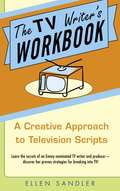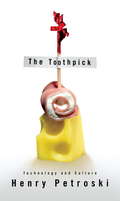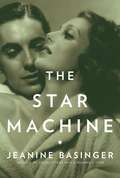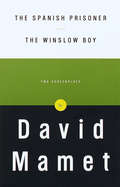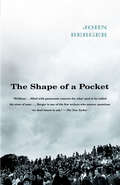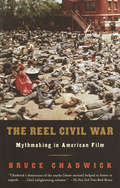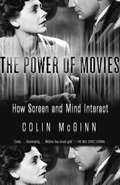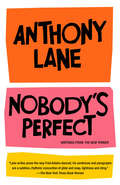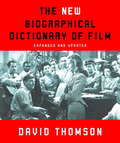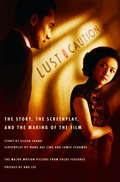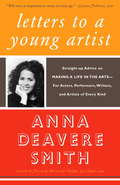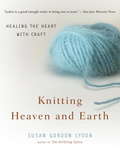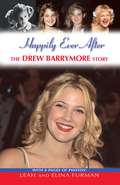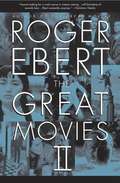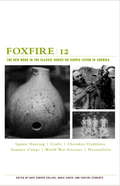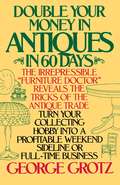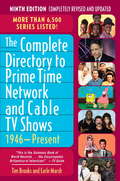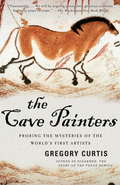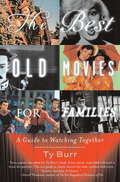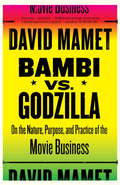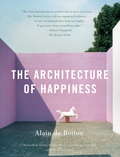- Table View
- List View
The TV Writer's Workbook: A Creative Approach To Television Scripts
by Ellen SandlerWhy is TV writing different from any other kind of writing? How will writing a spec script open doors? What do I have to do to get a job writing for TV? Writing for television is a business. And, like any business, there are proven strategies for success. In this unique hands-on guide, television writer and producer Ellen Sandler shares the trade secrets she learned while writing for hit shows like Everybody Loves Raymond and Coach. She offers concrete advice on everything from finding a story to getting hired on a current series.Filled with easy-to-implement exercises and practical wisdom, this ingenious how-to handbook outlines the steps for becoming a professional TV writer, starting with a winning script. Sandler explains the difference between "selling" and "telling," form and formula, theme and plot. Discover:* A technique for breaking down a show style so you're as close to being in the writing room as you can get without actually having a job there* The 3 elements for that essential Concept Line that you must havein order to create a story with passion and consequence* Mining the 7 Deadly Sins for fresh and original story lines* Sample scripts from hit shows* In-depth graphs, script breakdown charts, vital checkpointsalong the way, and much, much more!From the Trade Paperback edition.
The Toothpick: Technology and Culture
by Henry PetroskiLike The Pencil, Henry Petroski's The Toothpick is a celebration of a humble yet elegant device. As old as mankind and as universal as eating, this useful and ubiquitous tool finally gets its due in this wide-ranging and compulsively readable book. Here is the unexpected story of the simplest of implements--whether made of grass, gold, quill, or wood--a story of engineering and design, of culture and class, and a lesson in how to discover the extraordinary in the ordinary. Petroski takes us back to ancient Rome, where the emperor Nero makes his entrance into a banquet hall with a silver toothpick in his mouth; and to a more recent time in Spain, where a young señorita uses the delicately pointed instrument to protect her virtue from someone trying to steal a kiss. He introduces us to Charles Forster, a nineteenth-century Bostonian and father of the American toothpick industry, who hires Harvard students to demand toothpicks in area restaurants--thereby making their availability in eating establishments as expected as condiments. And Petroski takes us inside the surprisingly secretive toothpick-manufacturing industry, in which one small town's factories can turn out 200 million wooden toothpicks a day using methods that, except for computer controls, haven't changed much in almost 150 years. He also explores a treasure trove of the toothpick's unintended uses and perils, from sandwiches to martinis and beyond. With an engineer's eye for detail and a poet's flair for language, Petroski has earned his reputation as a writer who explains our world--from the tallest buildings to the lowliest toothpick--to us.
The Toothpick
by Henry PetroskiA celebration culture and technology, as seen through the history of the humble yet ubiquitous toothpick, from the best-selling author of The Pencil.From ancient Rome, where emperor Nero made his entrance into a banquet hall with a silver toothpick in his mouth, to nineteenth-century Boston, where Charles Forster, the father of the American wooden toothpick industry, ensured toothpicks appeared in every restaurant, the toothpick has been an omnipresent, yet often overlooked part of our daily lives. Here, with an engineer's eye for detail and a poet's flair for language, Henry Petroski takes us on an incredible tour of this most interesting invention. Along the way, he peers inside today's surprisingly secretive toothpick-manufacturing industry, and explores a treasure trove of the toothpick's unintended uses and perils, from sandwiches to martinis and beyond.From the Trade Paperback edition.
The Toothpick
by Henry PetroskiA celebration culture and technology, as seen through the history of the humble yet ubiquitous toothpick, from the best-selling author of The Pencil.From ancient Rome, where emperor Nero made his entrance into a banquet hall with a silver toothpick in his mouth, to nineteenth-century Boston, where Charles Forster, the father of the American wooden toothpick industry, ensured toothpicks appeared in every restaurant, the toothpick has been an omnipresent, yet often overlooked part of our daily lives. Here, with an engineer's eye for detail and a poet's flair for language, Henry Petroski takes us on an incredible tour of this most interesting invention. Along the way, he peers inside today's surprisingly secretive toothpick-manufacturing industry, and explores a treasure trove of the toothpick's unintended uses and perils, from sandwiches to martinis and beyond.From the Trade Paperback edition.
The Star Machine
by Jeanine BasingerAn excellent storyteller, Basinger has ransacked the archives for an in-depth history of the policy in early movie making to "make" a star. The lives and careers of a number of stars are examined to demonstrate the policy--including Tyrone Power, Lana Turner, Deanna Durbin, and Norma Shearer--and concludes with the abandonment of the starmaking machine after WWII. Many b&w plates are included. Basinger, who teaches film studies at Wesleyan U. and curates their cinema archives, has written a number of books on film. Annotation ©2008 Book News, Inc. , Portland, OR (booknews. com)
The Spanish Prisoner and The Winslow Boy: Two Screenplays
by David MametTHE SPANISH PRISONER "Elegant, entertaining. . . . Mamet's craftiest and most satisfying cinematic puzzle. " --The New York Times THE WINSLOW BOY "One of the most subtly compelling love stories of the year. " --The New York Observer Pulitzer Prize winner David Mamet ranks among the century's most influential writers for stage and screen. His dialogue--abrasive, rhythmic--illuminates a modern aesthetic evocative of Samuel Beckett. His plots--surprising, comic, topical--have evoked comparisons to masters from Alfred Hitchcock to Arthur Miller. Here are two screenplays demonstrating the astounding range of Mamet's talents. The Spanish Prisoner, a neo-noir thriller about a research-and-development cog hoodwinked out of his own brilliant discovery, demonstrates Mamet's incomparable use of character in a dizzying tale of twists and mistaken identity. The Winslow Boy, Mamet's revisitation of Terence Rattigan's classic 1946 play, tells of a thirteen-year-old boy accused of stealing a five-shilling postal order and the tug of war for truth that ensues between his middle-class family and the Royal Navy. Crackling with wit, intelligent and surprising,The Spanish PrisonerandThe Winslow Boycelebrate Mamet's unique genius and our eternal fascination with the extraordinary predicaments of the common man.
The Shape of a Pocket
by John BergerThe pocket in question is a small pocket of resistance. A pocket is formed when two or more people come together in agreement. The resistance is against the inhumanity of the New World Economic Order. The people coming together are the reader, me, and those the essays are about-Rembrandt, Paleolithic cave painters, a Romanian peasant, ancient Egyptians, an expert in the loneliness of a certain hotel bedroom, dogs at dusk, a man in a radio station. And unexpectedly, our exchanges strengthen each of us in our conviction that what is happening in the world today is wrong, and that what is often said about it is a lie. I've never written a book with a greater sense of urgency.-John BergerFrom the Trade Paperback edition.
The Reel Civil War: Mythmaking in American Film
by Bruce ChadwickArguing that film consistently distorts and sanitizes the past, Chadwick (history and film, Rutgers U.) details the distortions and myths purveyed by film from the KKK to the 1993 film in which actor Richard Gere plays a former slave-owner who is miraculously transformed into a populist who heroically drives off the KKK from a racially integrated community. For the bulk of film's history, myths have portrayed a myth of the underdog Southerner and demeaned African Americans, but new "politically correct," yet still sanitized, versions have begun to crop up in Hollywood productions. In the end, Chadwick seems to believe, despite changes in the treatment of the Civil war on screen, the "reel" still fails to be "real." Annotation c. Book News, Inc., Portland, OR (booknews.com)
The Power Of Movies
by Colin McginnHow is watching a movie similar to dreaming? What goes on in our minds when we become absorbed in a movie? How does looking “into” a movie screen allow us to experience the thoughts and feelings of a movie’s characters? These and related questions are at the heart ofThe Power of Movies,a thoughtful, invigorating, and remarkably accessible book about a phenomenon seemingly beyond reach of our understanding. Colin McGinn–“an ingenious philosopher who thinks like a laser and writes like a dream,” according to Steven Pinker–enhances our understanding of both movies and ourselves in this book of rare and refreshing insight.
Nobody's Perfect: Writings from The New Yorker
by Anthony LaneAnthony Lane on Con Air—“Advance word on Con Air said that it was all about an airplane with an unusually dangerous and potentially lethal load. Big deal. You should try the lunches they serve out of Newark. Compared with the chicken napalm I ate on my last flight, the men in Con Air are about as dangerous as balloons.”Anthony Lane on The Bridges of Madison County—“I got my copy at the airport, behind a guy who was buying Playboy’s Book of Lingerie, and I think he had the better deal. He certainly looked happy with his purchase, whereas I had to ask for a paper bag.” Anthony Lane on Martha Stewart—“Super-skilled, free of fear, the last word in human efficiency, Martha Stewart is the woman who convinced a million Americans that they have the time, the means, the right, and—damn it—the duty to pipe a little squirt of soft cheese into the middle of a snow pea, and to continue piping until there are ‘fifty to sixty’ stuffed peas raring to go.”For ten years, Anthony Lane has delighted New Yorker readers with his film reviews, book reviews, and profiles that range from Buster Keaton to Vladimir Nabokov to Ernest Shackleton. Nobody’s Perfect is an unforgettable collection of Lane’s trademark wit, satire, and insight that will satisfy both the long addicted and the not so familiar.
The New Biographical Dictionary of Film
by David Thomson'This book is both more and less than history, a work of imagination in its own right, a piece of movie literature that turns fact into romance. ' Gavin Lambert was reviewing the first edition of David Thomson's monumental work in 1975. In the eight years since the third edition was published, careers have waxed and waned, reputations been made and lost, great movies produced, trends set and scorned. This fourth edition has 200 entirely new entries and every original entry has been re-examined. Thus the roster of directors, actors, producers, screenwriters and camera men is both historical and contemporary, with old masters reappraised in terms of how their work has lasted. Each of the 1,000 profiles is keenly perceptive, provocative critical essay. Striking the perfect balance between personal bias and factual reliability, David Thomson - novelist, critic, biographer and unabashed film addict - has given us an enormously rich reference book, a brilliant reflection on the art and artists of the cinema.
Lust, Caution
by Eileen Chang Wang Hui LingNow a major motion picture from Oscar-winning director Ang Lee (Crouching Tiger, Hidden Dragon, Brokeback Mountain): an intensely passionate story of love and espionage, set in Shanghai during World War II.In the midst of the Japanese occupation of China and Hong Kong, two lives become intertwined: Wong Chia Chi, a young student active in the resistance, and Mr. Yee, a powerful political figure who works for the Japanese occupational government. As these two move deftly between Shanghai's tea parties and secret interrogations, they become embroiled in the complicated politics of wartime -- and in a mutual attraction that may be more than what they expected. Written in lush, lavish prose, and with the tension of a political thriller, Lust, Caution brings 1940s Shanghai artfully to life even as it limns the erotic pulse of a doomed love affair.From the Trade Paperback edition.
Letters to a Young Artist: Straight-up Advice on Making a Life in the Arts-For Actors, Performers, Writers, and Artists of Every Kind
by Anna Deavere SmithAn inspiring and no-nonsense guide for aspiring artists of all stripes—from &“the most exciting individual in American theater&” (Newsweek). In vividly anecdotal letters to the young BZ, Anna Deavere Smith addresses the full spectrum of issues that all artists starting out will face: from questions of confidence, discipline, and self-esteem, to fame, failure, and fear, to staying healthy, presenting yourself effectively, building a diverse social and professional network, and using your art to promote social change. At once inspiring and no-nonsense, Letters to a Young Artist will challenge you, motivate you, and set you on a course to pursue your art without compromise.
Knitting Heaven and Earth: Healing the Heart with Craft
by Susan Gordon LydonFrom the author of the modern classicThe Knitting Sutracomes an inspiring and colorful narrative on knitting through one's darkest hours. Susan Gordon Lydon's groundbreaking bookThe Knitting Sutraoffered a new way for knitters to look at their craft--as a healing and meditative endeavor instead of a granny hobby or an indulgent pastime. The first book without knitting patterns to capture the knitting audience, it has been widely imitated, but no other book has endured so well. WithKnitting Heaven and Earth, Lydon again breaks new ground, this time following the emotional ties that become bound up in her handicrafts when a series of wrenching events--a heartbreaking romance, the death of her father, a devastating diagnosis of breast cancer--leave her reeling. Through it all, Lydon finds new reserves of strength in knitting, in the skeins of sumptuous yarn and colorful thread that help her make sense of the trials of the heart.
Happily Ever After: The Drew Barrymore Story
by Leah Furman Elina FurmanDrew Barrymore was a star by the time she was seven years old, a drug addict by twelve, and a has - been before her sixteenth birthday. But with the resounding success of such recent films as Ever After: A Cinderella Story, The Wedding Singer, Never Been Kissed (produced by Drew's production company, Flower Films) and Charlie's Angels, Drew Barrymore has reclaimed her place as one of Hollywood's hottest young actors. Her inspirational comeback from a highly publicized battle with drug and alcohol addiction has left this former child star wiser, happier, and more triumphant then ever.From her struggle to reenter Hollywood to her many acclaimed movies, from a strained relationship with her mother and a failed marriage to a newfound sense of peace and enduring love, HAPPILY EVER AFTER offers a fascinating look at the troubled Little Girl Lost and the beautiful woman she grew up to be!An unauthorized biographyFrom the Paperback edition.
The Great Movies II
by Roger EbertFrom America's most trusted and highly visible film critic, 100 more brilliant essays on the films that define cinematic greatness.Continuing the pitch-perfect critiques begun in The Great Movies, Roger Ebert's The Great Movies II collects 100 additional essays, each one of them a gem of critical appreciation and an amalgam of love, analysis, and history that will send readers back to films with a fresh set of eyes and renewed enthusiasm--or perhaps to an avid first-time viewing. Neither a snob nor a shill, Ebert manages in these essays to combine a truly populist appreciation for today's most important form of popular art with a scholar's erudition and depth of knowledge and a sure aesthetic sense. Once again wonderfully enhanced by stills selected by Mary Corliss, former film curator at the Museum of Modern Art, The Great Movies II is a treasure trove for film lovers of all persuasions, an unrivaled guide for viewers, and a book to return to again and again.Films featured in The Great Movies II12 Angry Men · The Adventures of Robin Hood · Alien · Amadeus · Amarcord · Annie Hall · Au Hasard, Balthazar · The Bank Dick · Beat the Devil · Being There · The Big Heat · The Birth of a Nation · The Blue Kite · Bob le Flambeur · Breathless · The Bridge on the River Kwai · Bring Me the Head of Alfredo García · Buster Keaton · Children of Paradise · A Christmas Story · The Color Purple · The Conversation · Cries and Whispers · The Discreet Charm of the Bourgeoisie · Don't Look Now · The Earrings of Madame de . . . · The Fall of the House of Usher · The Firemen's Ball · Five Easy Pieces · Goldfinger · The Good, the Bad and the Ugly · Goodfellas · The Gospel According to Matthew · The Grapes of Wrath · Grave of the Fireflies · Great Expectations · House of Games · The Hustler · In Cold Blood · Jaws · Jules and Jim · Kieslowski's Three Colors Trilogy · Kind Hearts and Coronets · King Kong · The Last Laugh · Laura · Leaving Las Vegas · Le Boucher · The Leopard · The Life and Death of Colonel Blimp · The Manchurian Candidate · The Man Who Laughs · Mean Streets · Mon Oncle · Moonstruck · The Music Room · My Dinner with Andre · My Neighbor Totoro · Nights of Cabiria · One Flew Over the Cuckoo's Nest · Orpheus · Paris, Texas · Patton · Picnic at Hanging Rock · Planes, Trains and Automobiles · The Producers · Raiders of the Lost Ark · Raise the Red Lantern · Ran · Rashomon · Rear Window · Rififi · The Right Stuff · Romeo and Juliet · The Rules of the Game · Saturday Night Fever · Say Anything · Scarface · The Searchers · Shane · Snow White and the Seven Dwarfs · Solaris · Strangers on a Train · Stroszek · A Sunday in the Country · Sunrise · A Tale of Winter · The Thin Man · This Is Spinal Tap ·Tokyo Story · Touchez Pas au Grisbi · Touch of Evil · The Treasure of the Sierra Madre · Ugetsu · Umberto D · Unforgiven · Victim · Walkabout · West Side Story · Yankee Doodle Dandy
Foxfire 12
by Kaye Carver Collins Angie CheekFor more than thirty years, Foxfire books have brought the philosophy of simple living to hundreds of thousands of readers, teaching creative-self-sufficiency, the art of natural remedies, home crafts, and preserving the stories and customs of Appalachia. Inspiring and practical, this classic series has become an American institution. Foxfire 12 is the latest volume, the first in more than five years. Here are reminiscences about learning to square dance and tales about traditional craftsmen who created useful items in the old-time ways that have since disappeared in most of the country. Here are lessons on how to make rose beads and wooden coffins, and on how to find turtles in your local pond. We hear the voices of descendants of the Cherokees who lived in the region, and we learn about what summer camp was like for generations of youngsters. We meet a rich assortment of Appalachian characters and listen to veterans recount their war experiences. Illustrated with photographs and drawings, Foxfire 12 is a rich trove of information and stories from a fascinating American culture.
Double Your Money in Antiques in 60 Days: Turn Your Collecting Hobby into a Profitable Weekend Sideline or Full-Time Business
by George GrotzPopular antiques expert George Grotz reveals how to make real money in the antiques trade--must reading for every collector, auction-goer, and flea-market fanatic.
Disarmed: The Story of the Venus de Milo
by Greg CurtisIn the spring of 1820, on the Aegean island of Melos, an unsuspecting farmer was digging for marble building blocks when he unearthed the statue that would come to be known as the Venus de Milo. From the moment of its discovery a battle for possession ensued and was won, eventually, by the French. Touted by her keepers in the Louvre as the great classical find of the era, the sculpture gained instant celebrity–and yet its origins had yet to be documented or verified. From the flurry of excitement surrounding her discovery, to the raging disputes over her authenticity, to the politics and personalities that have given rise to her mystique, Gregory Curtis has given us a riveting look at the embattled legacy of a beloved icon and a remarkable tribute to one of the world’s great works of art.
The Complete Directory to Prime Time Network and Cable TV Shows, 1946-Present
by Tim Brooks Earle F. MarshAMERICA’S #1 BESTSELLING TELEVISION BOOK WITH MORE THAN HALF A MILLION COPIES IN PRINT–NOW REVISED AND UPDATED!PROGRAMS FROM ALL SEVEN COMMERCIAL BROADCAST NETWORKS, MORE THAN ONE HUNDRED CABLE NETWORKS, PLUS ALL MAJOR SYNDICATED SHOWS!This is the must-have book for TV viewers in the new millennium–the entire history of primetime programs in one convenient volume. It’s a guide you’ll turn to again and again for information on every series ever telecast. There are entries for all the great shows, from evergreens like The Honeymooners, All in the Family, and Happy Days to modern classics like 24, The Office, and Desperate Housewives; all the gripping sci-fi series, from Captain Video and the new Battle Star Galactica to all versions of Star Trek; the popular serials, from Peyton Place and Dallas to Dawson’s Creek and Ugly Betty; the reality show phenomena American Idol, Survivor, and The Amazing Race; and the hits on cable, including The Daily Show with Jon Stewart, Top Chef, The Sopranos, Curb Your Enthusiasm, Project Runway, and SpongeBob SquarePants. This comprehensive guide lists every program alphabetically and includes a complete broadcast history, cast, and engaging plot summary–along with exciting behind-the-scenes stories about the shows and the stars.MORE THAN 500 ALL-NEW LISTINGS from Heroes and Grey’s Anatomy to 30 Rock and Nip/Tuck UPDATES ON CONTINUING SHOWS such as CSI, Gilmore Girls, The Simpsons, and The Real WorldEXTENSIVE CABLE COVERAGE with more than 1,000 entries, including a description of the programming on each major cable networkAND DON’T MISS the exclusive and updated “Ph.D. Trivia Quiz” of 200 questions that will challenge even the most ardent TV fan, plus a streamlined guide to TV-related websites for those who want to be constantly up-to-dateSPECIAL FEATURES!• Annual program schedules at a glance for the past 61 years • Top-rated shows of each season • Emmy Award winners • Longest-running series • Spin-off series • Theme songs • A fascinating history of TV “This is the Guinness Book of World Records . . .the Encyclopedia Britannica of television!”–TV Guide
The Cave Painters: Probing the Mysteries of the Worlds First Artists
by Gregory CurtisIn this comprehensive study of the cave paintings of France and Spain, Curtis touches on every aspect of the paintings, from their beauty and theories about their origins to the men and women who rediscovered them. He considers the meaning of the paintings by reviewing the major theories--that the art was part of fertility or hunting rituals, was used for religious purposes or was clan mythology--and explaining the ways in which ethnography, archeology and religion have influenced the thinking about the paintings over time. Annotation ©2007 Book News, Inc. , Portland, OR (booknews. com)
The Cave Painters
by Gregory CurtisThe Cave Painters is a vivid introduction to the spectacular cave paintings of France and Spain--the individuals who rediscovered them, theories about their origins, their splendor and mystery.Gergory Curtis makes us see the astonishing sophistication and power of the paintings and tells us what is known about their creators, the Cro-Magnon people of some 40,000 years ago. He takes us through various theories--that the art was part of fertility or hunting rituals, or used for religious purposes, or was clan mythology--examining the ways interpretations have changed over time. Rich in detail, personalities, and history, The Cave Painters is above all permeated with awe for those distant humans who developed--perhaps for the first time--both the ability for abstract thought and a profound and beautiful way to express it.From the Trade Paperback edition.
The Best Old Movies for Families
by Ty BurrIf a child can watch Barney, can't that same child also enjoy watching Charlie Chaplin or the Marx Brothers? And as they get older, wouldn't they grow to like screwball comedies (His Girl Friday), women's weepies (Imitation of Life), and westerns (The Searchers)? The answer is that they'll follow because they'll have learned that "old" does not necessarily mean "next channel, please."Here is an impassioned and eminently readable guide that introduces the delights of the golden age of movies. Ty Burr has come up with a winning prescription for children brought up on Hollywood junk food. FOR THE LITTLE ONES (Ages 3--6): Fast-paced movies that are simple without being unsophisticated, plainspoken without being dumbed down. Singin' in the Rain and Bringing Up Baby are perfect.FOR THE ONES IN BETWEEN (Ages 7--12): "Killer stories," placing easily grasped characters in situations that start simply and then throw curveballs. The African Queen and Some Like It Hot do the job well.FOR THE OLDER ONES (Ages 13+): Burr recommends relating old movies to teens' contemporary favorites: without Hitchcock, there could be no The Texas Chainsaw Massacre, without Brando, no Johnny Depp.From the Trade Paperback edition.
Bambi vs. Godzilla: On The Nature, Purpose, and Practice of the Movie Business
by David MametInBambi vs. Godzilla, David Mamet, the award-winning playwright and screenwriter, gives us an exhilaratingly subversive inside look at Hollywood from the perspective of a filmmaker who has always played the game his own way. Who really reads the scripts at the film studios? How is a screenplay like a personals ad? Whose opinion matters when revising a screenplay? Why are there so many producers listed in movie credits? And what the hell do those producers do, anyway? Refreshingly unafraid to offend, Mamet provides hilarious, surprising, and bracingly forthright answers to these and other questions about virtually every aspect of filmmaking, from concept to script to screen. He covers topics ranging from “How Scripts Got So Bad” to the oxymoron of “Manners in Hollywood. ” He takes us step-by-step through some of his favorite movie stunts and directorial tricks, and demonstrates that it is craft and crew, not stars and producers, that make great films. He tells us who his favorite actors and what his favorite movies are, who he thinks is the most perfect actor to grace the screen, and who he thinks should never have appeared there. Demigods and sacred cows of the movie business–beware! But for the rest of us, Mamet speaking truth to Hollywood makes for searingly enjoyable reading. From the Hardcover edition.
The Architecture of Happiness
by Alain De BottonBestselling author Alain de Botton considers how our private homes and public edifices influence how we feel, and how we could build dwellings in which we would stand a better chance of happiness.In this witty, erudite look at how we shape, and are shaped by, our surroundings, Alain de Botton applies Stendhal's motto that "Beauty is the promise of happiness" to the spaces we inhabit daily. Why should we pay attention to what architecture has to say to us? de Botton asks provocatively.With his trademark lucidity and humour, de Botton traces how human needs and desires have been served by styles of architecture, from stately Classical to minimalist Modern, arguing that the stylistic choices of a society can represent both its cherished ideals and the qualities it desperately lacks. On an individual level, de Botton has deep sympathy for our need to see our selves reflected in our surroundings; he demonstrates with great wisdom how buildings -- just like friends -- can serve as guardians of our identity. Worrying about the shape of our sofa or the colour of our walls might seem self-indulgent, but de Botton considers the hopes and fears we have for our homes at a new level of depth and insight. When shopping for furniture or remodelling the kitchen, we don't just consider functionality but also the major questions of aesthetics and the philosophy of art: What is beauty? Can beautiful surroundings make us good? Can beauty bring happiness? The buildings we find beautiful, de Botton concludes, are those that represent our ideas of a meaningful life. The Architecture of Happiness marks a return to what Alain does best -- taking on a subject whose allure is at once tantalizing and a little forbidding and offering to readers a completely beguiling and original exploration of the subject. As he did with Proust, philosophy, and travel, now he does with architecture.From the Hardcover edition.
